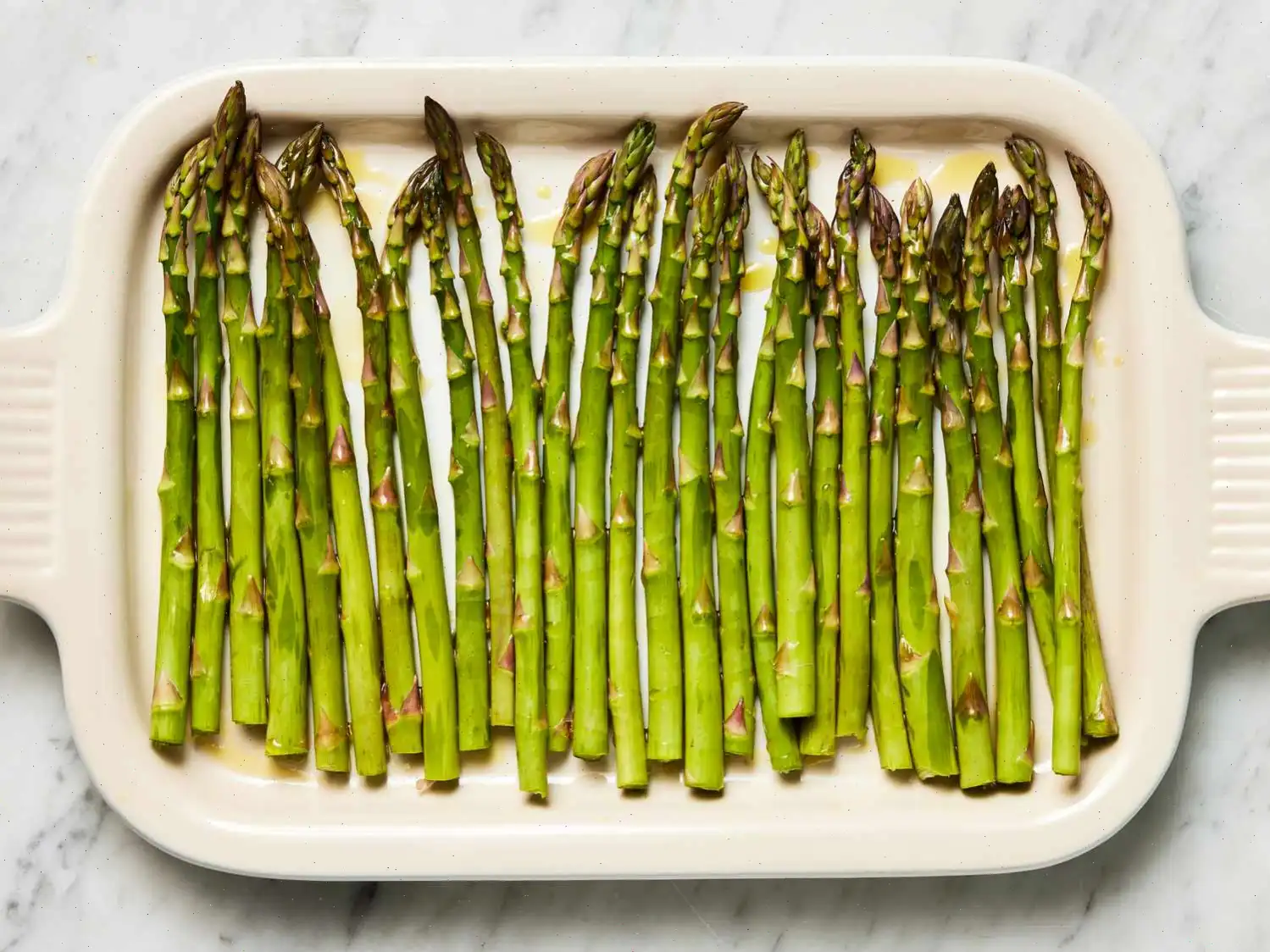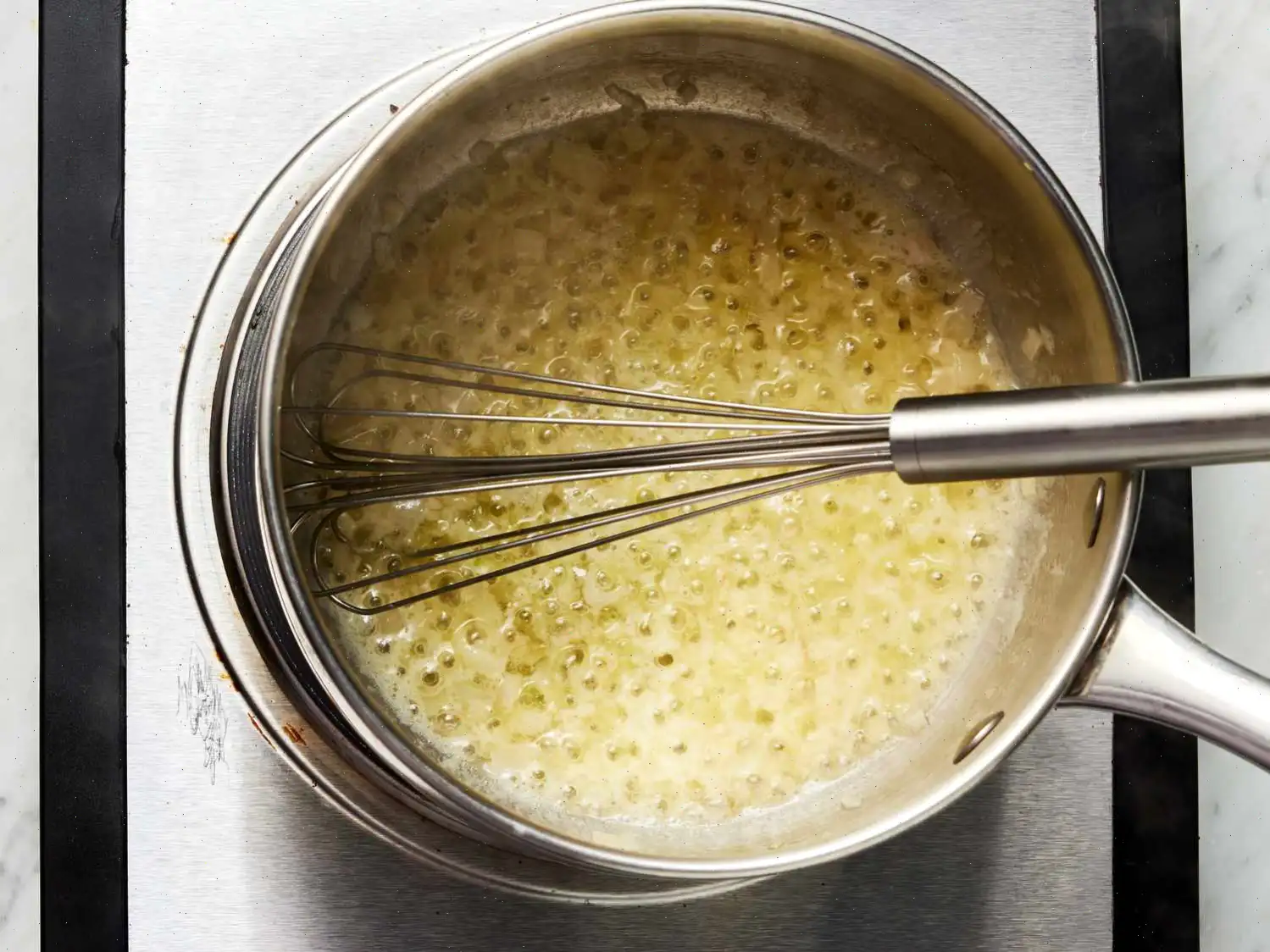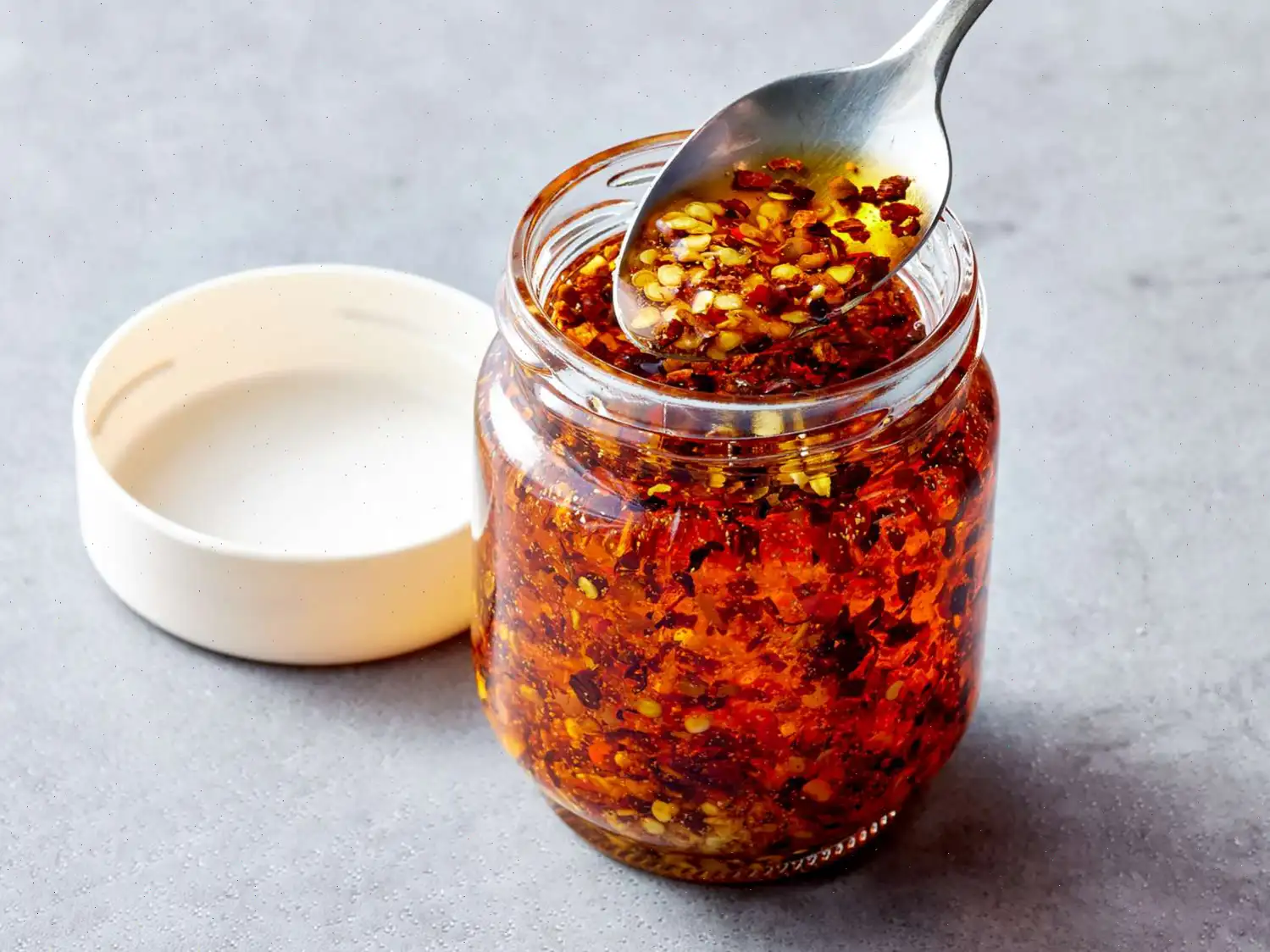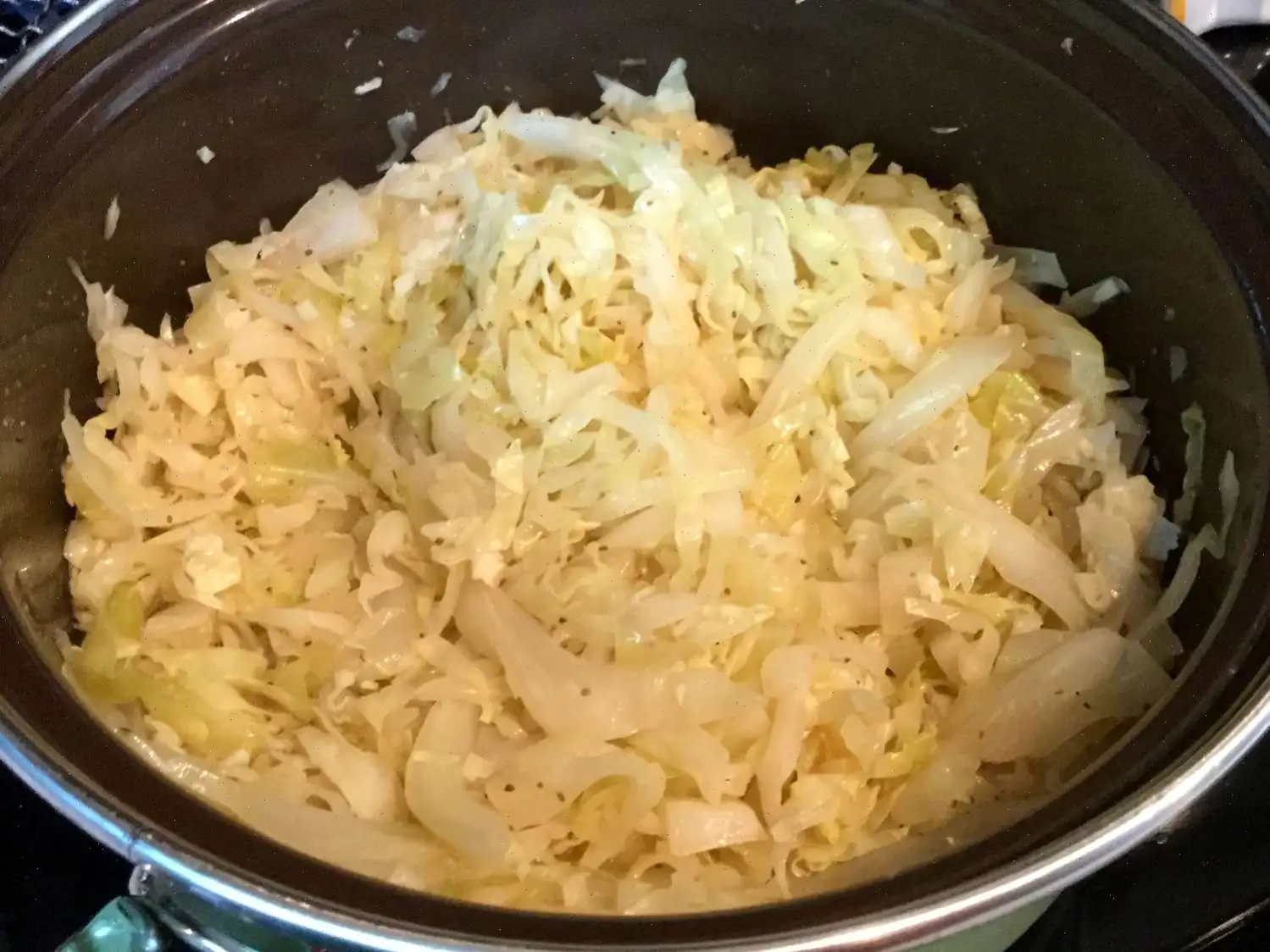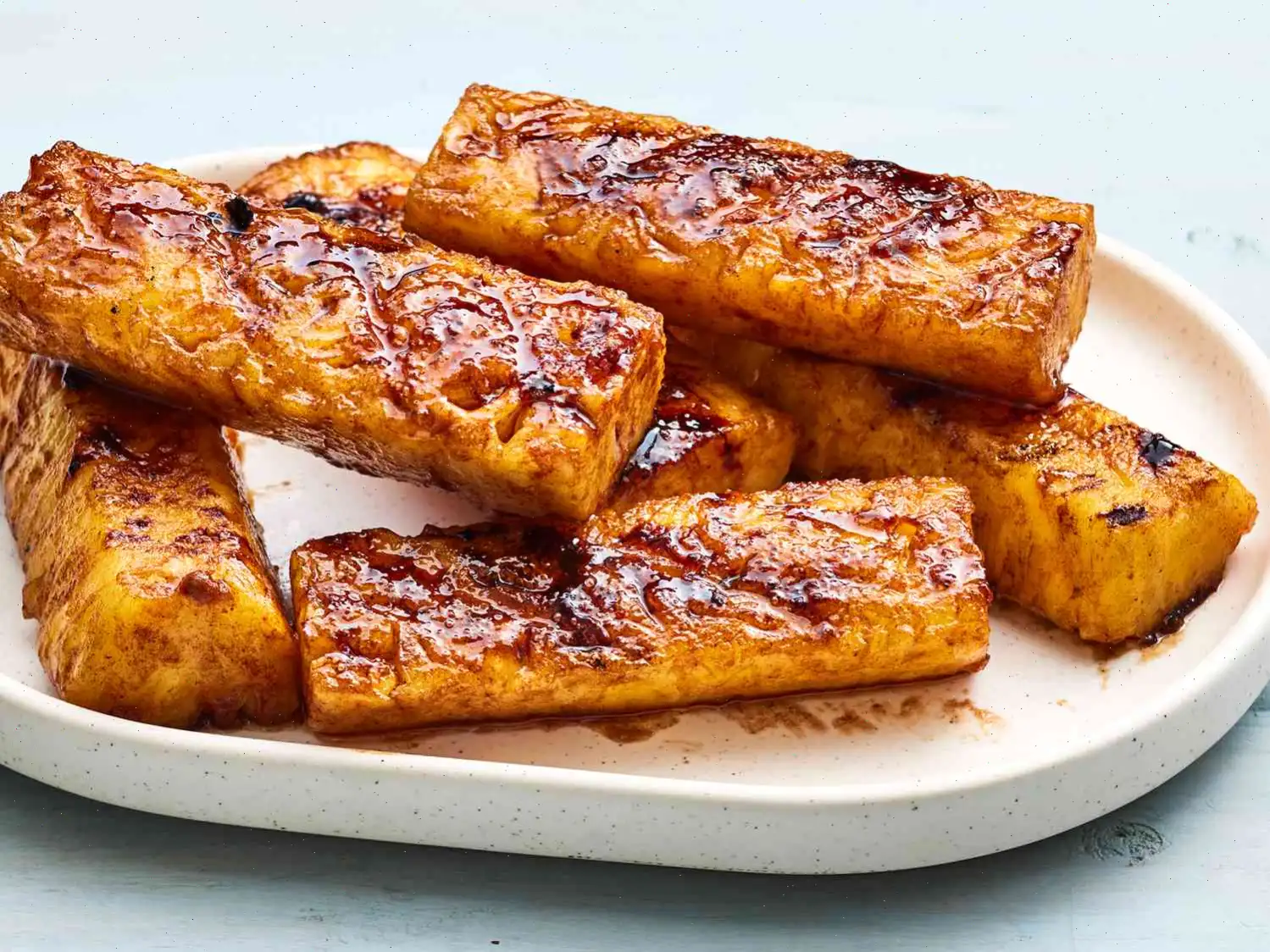
Asparagus Casserole Recipe
Asparagus Gratin with Havarti Cheese
Ingredients
- 2 pounds fresh asparagus, trimmed
- 4 tablespoons unsalted butter, divided
- 2 tablespoons minced shallot
- 2 1/2 tablespoons all-purpose flour
- 2 cups half-and-half
- 1 cup loosely packed shredded Havarti cheese
- 2 teaspoons lemon zest, plus more for garnish
- 1 1/4 teaspoons kosher salt, divided
- cup crushed butter crackers (such as Ritz)
- 1/2 cup sliced almonds
- 1 teaspoon chopped fresh dill, plus more for garnish
Directions
Step 1: Gather all ingredients to ensure everything is ready for preparation.
Step 2: Preheat your oven to 400F (200C). Lightly coat a 9x13-inch baking dish with cooking spray.
Step 3: Trim the asparagus to fit the baking dish and arrange it in an even layer. Set aside.
Step 4: In a saucepan, melt 3 tablespoons of butter over medium-high heat. Add the minced shallots and cook, stirring often, until they soften, about 3 minutes.
Step 5: Add the flour and cook while stirring constantly until the mixture smells slightly nutty, about 2 minutes.
Step 6: Whisk in the half-and-half, cooking and stirring constantly until the mixture thickens, about 3 minutes. Remove the saucepan from the heat and whisk in the Havarti cheese, lemon zest, and 1 teaspoon of salt.
Step 7: Pour the cheese sauce evenly over the center of the asparagus, leaving the tips and ends exposed.
Step 8: Bake the asparagus in the preheated oven for 10 minutes.
Step 9: While the asparagus bakes, place the remaining 1 tablespoon of butter in a microwave-safe bowl and heat on HIGH for about 30 seconds until melted. Stir in the crushed crackers, sliced almonds, chopped dill, and the remaining 1/4 teaspoon of salt until evenly combined.
Step 10: After 10 minutes of baking, remove the dish from the oven. Sprinkle the cracker mixture evenly over the asparagus.
Step 11: Return the dish to the oven and bake for an additional 10 minutes, or until the asparagus is tender and the topping is golden brown.
Step 12: Serve hot, garnished with extra lemon zest and dill, if desired.
Nutrition Facts (Per Serving)
- Calories: 349
- Total Fat: 28g (35% Daily Value)
- Saturated Fat: 14g (72% Daily Value)
- Cholesterol: 67mg (22% Daily Value)
- Sodium: 465mg (20% Daily Value)
- Total Carbohydrate: 16g (6% Daily Value)
- Dietary Fiber: 4g (16% Daily Value)
- Total Sugars: 6g
- Protein: 13g (26% Daily Value)
- Vitamin C: 14mg (15% Daily Value)
- Calcium: 286mg (22% Daily Value)
- Iron: 2mg (11% Daily Value)
- Potassium: 546mg (12% Daily Value)
Percent Daily Values are based on a 2,000 calorie diet. Your daily values may be higher or lower depending on your calorie needs.
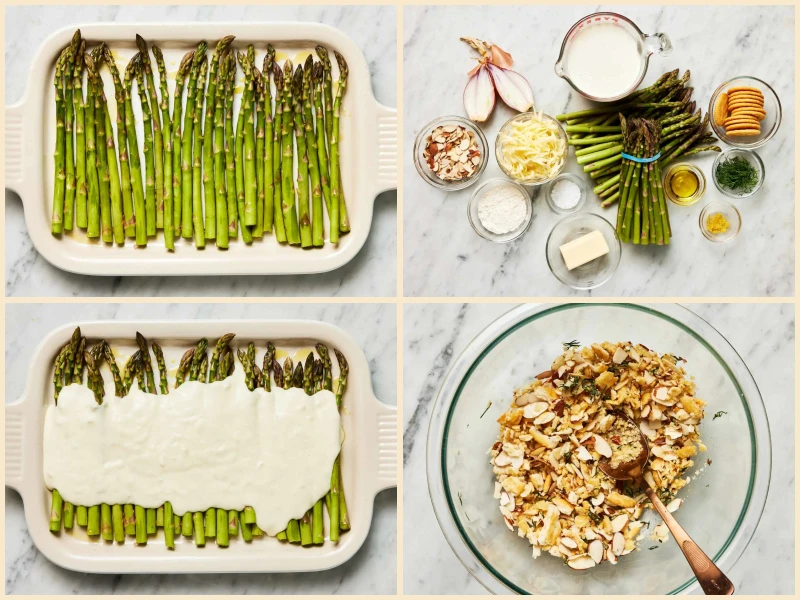

Recipe by: Ita Mac Airt
History of Asparagus Casserole
Asparagus casserole is a beloved side dish, especially in American cuisine, where it is often served during festive occasions like Easter and Thanksgiving. Asparagus itself has ancient roots, dating back to Greek and Roman times, but the casserole format is a more modern invention. The casserole as we know it todaycombining vegetables with a creamy sauce and crunchy toppingbecame popular in the mid-20th century, with the rise of convenience cooking and the widespread use of canned goods. Over time, the dish evolved, with different regions putting their unique spin on it, but its comforting, indulgent nature has remained a consistent feature.
Regional Features of Asparagus Casserole
The asparagus casserole, while particularly popular in the United States, can vary significantly depending on region and available ingredients. In the South, its often made with a generous amount of cheese and creamy sauces, sometimes with a cracker or breadcrumb topping for added texture. In contrast, in the Pacific Northwest, where asparagus is grown abundantly, the dish may highlight the fresh, natural flavor of the vegetable with a lighter preparation. Additionally, regional variations may incorporate local herbs like dill or tarragon, or use alternative cheeses such as Gruyre or cheddar.
How It Differs from Similar Dishes
Asparagus casserole stands out from other vegetable casseroles due to its specific combination of flavors and textures. Unlike more traditional casseroles made with potatoes or squash, which often rely on a thick, starchy base, asparagus casseroles are known for their creamy richness paired with the distinct crunch of cracker or nut toppings. The use of asparagus gives it a lightness that is not typically found in heavier casseroles. Furthermore, the addition of lemon zest, fresh dill, and Havarti cheese lends a sophisticated and bright contrast to the savory base, making it unique from other baked vegetable dishes that might focus on a single flavor profile.
Where Asparagus Casserole is Typically Served
This dish is often featured as a side dish during major holiday meals or family gatherings. It's a staple on the table for Easter, Thanksgiving, and Christmas dinners, particularly in households that prioritize fresh, seasonal vegetables. Its rich, yet light, texture makes it an ideal complement to roast meats such as turkey, chicken, or ham. In addition to festive occasions, asparagus casserole can be a perfect addition to a spring brunch or a dinner party, showcasing the freshness of early-season asparagus.
Fun Facts About Asparagus Casserole
- Asparagus has been cultivated for over 2,000 years, and it was once considered a delicacy by the Romans.
- The bright green stalks of asparagus are packed with vitamins A, C, E, and K, as well as fiber and folate, making this casserole a nutritious choice.
- While its traditionally made with fresh asparagus, some variations of the casserole use frozen asparagus for convenience.
- The dishs creamy sauce often includes a combination of butter, cheese, and sometimes cream or milk, making it a rich and comforting treat.
- Though crackers and almonds are common toppings, some cooks add crispy bacon or even fried onions to enhance the flavor and crunch.
You can listen to this recipe in AI audio format. Simply click the play button below to listen to the content in a format that suits you best. It’s a great way to absorb information on the go!
FAQ about Asparagus Casserole Recipe
Comments
Angela Wright
03/09/2023 04:22:10 AM
The recipe was simple to follow. The asparagus turned out slightly soft instead of crisp, which made me think I might have overcooked it. Additionally, the dish was a bit too salty for my taste. If I make it again, I'll definitely cut down on the salt. Despite these issues, we still enjoyed it a lot! Overall, it was delicious.
Steven Sanchez
09/25/2023 05:51:50 AM
I tried making this dish and I absolutely adored it. It was light and packed with delicious flavors.
Catherine Rodriguez
08/28/2022 01:43:53 PM
Great flavor and simple to prepare! I substituted a teaspoon of Dijon mustard for lemon in the sauce. There was an excess of sauce... I ended up only using half of it, which was more than enough. The family really enjoyed it.


